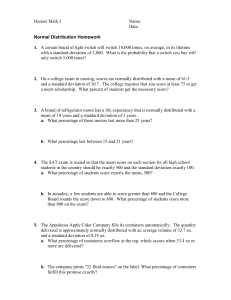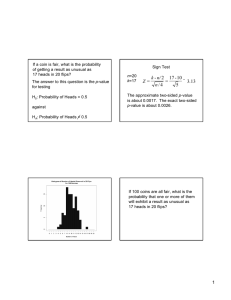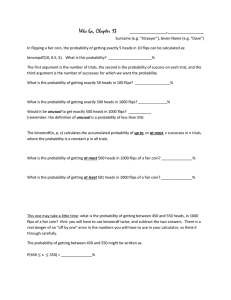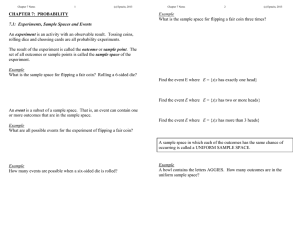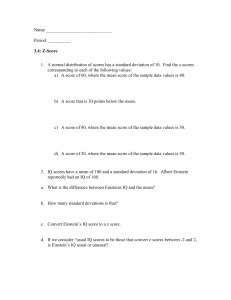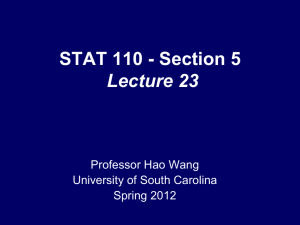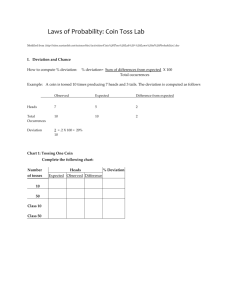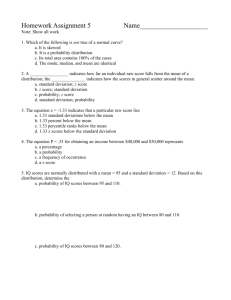ResearchQuizChapter1
advertisement
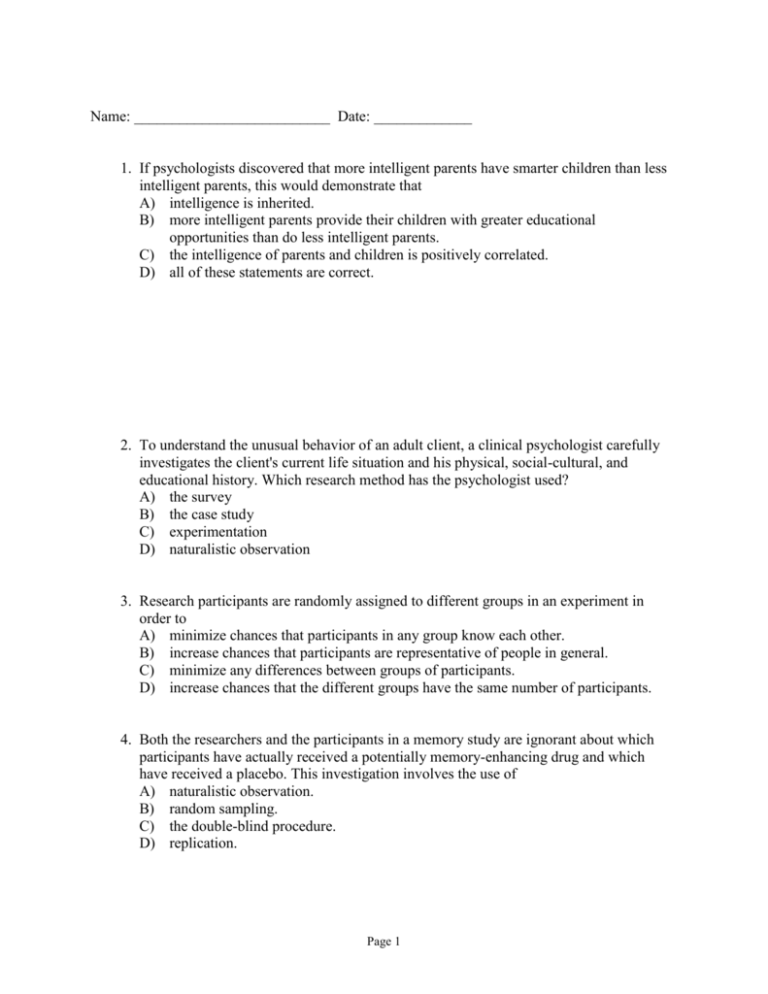
Name: __________________________ Date: _____________ 1. If psychologists discovered that more intelligent parents have smarter children than less intelligent parents, this would demonstrate that A) intelligence is inherited. B) more intelligent parents provide their children with greater educational opportunities than do less intelligent parents. C) the intelligence of parents and children is positively correlated. D) all of these statements are correct. 2. To understand the unusual behavior of an adult client, a clinical psychologist carefully investigates the client's current life situation and his physical, social-cultural, and educational history. Which research method has the psychologist used? A) the survey B) the case study C) experimentation D) naturalistic observation 3. Research participants are randomly assigned to different groups in an experiment in order to A) minimize chances that participants in any group know each other. B) increase chances that participants are representative of people in general. C) minimize any differences between groups of participants. D) increase chances that the different groups have the same number of participants. 4. Both the researchers and the participants in a memory study are ignorant about which participants have actually received a potentially memory-enhancing drug and which have received a placebo. This investigation involves the use of A) naturalistic observation. B) random sampling. C) the double-blind procedure. D) replication. Page 1 5. Critical thinking is smart thinking that involves A) debriefing. B) case study. C) evaluating evidence. D) informed consent. 6. Which research method would be most appropriate for investigating the relationship between the religious beliefs of Americans and their attitudes toward abortion? A) the survey B) naturalistic observation C) the case study D) experimentation 7. Which of the following is a statistical measure of both the direction and the strength of a relationship between two variables? A) correlation coefficient B) standard deviation C) range D) mean 8. If participants in the experiment group of a drug treatment study are much younger than participants in the control group, the age of the research participants is a A) dependent variable. B) correlation coefficient. C) confounding variable. D) standard deviation. 9. Which of the following is true for those assigned to a control group? A) The experimenter exerts the greatest influence on participants' behavior. B) The research participants are exposed to all the different experimental treatments. C) The research participants are exposed to the most favorable levels of experimental treatment. D) The experimental treatment is absent. 10. Correlational research is most useful for purposes of A) explanation. B) prediction. C) control. D) replication. Page 2 11. The mean of a distribution of scores is the A) most frequently occurring score. B) arithmetic average of all the scores. C) least frequently occurring score. D) score exceeded by 50 percent of all the scores. 12. The standard deviation is the square root of the average squared deviation of scores from the A) normal curve. B) median. C) mean. D) range. 13. Which of the following events is the most probable? A) flipping 6 or more heads in 10 coin flips B) flipping 60 or more heads in 100 coin flips C) flipping 600 or more heads in 1000 coin flips D) All these events are equally probable. Page 3 Page 4

